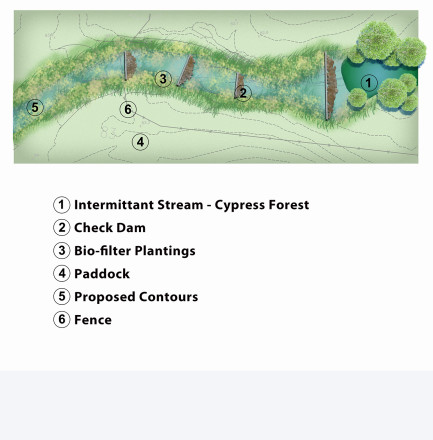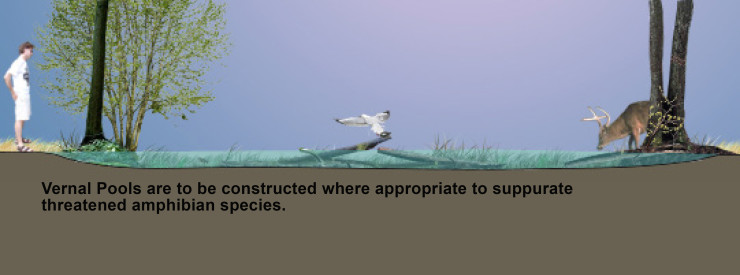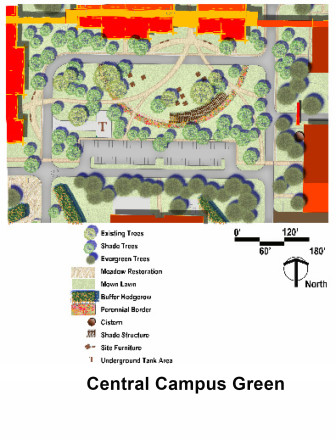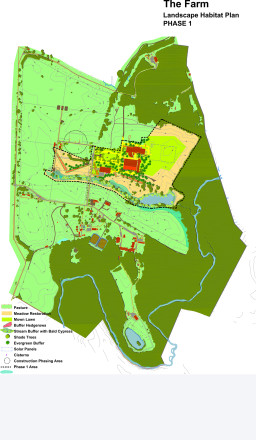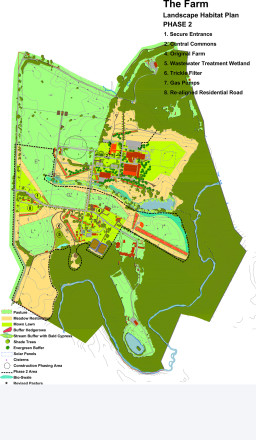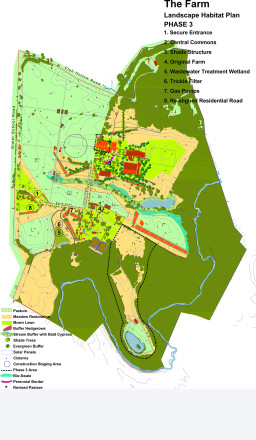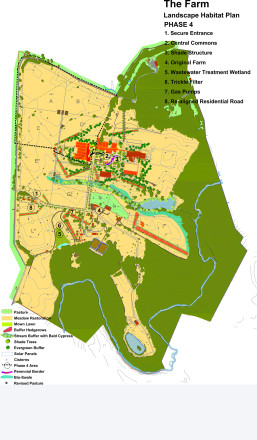National Institute of Health
The National Institute of Health, The Animal Farm
(use scroll bar on right side of this window to read description)
LOCATION: Poolseville, Maryland
CLIENT: Metropolitan Architects and Planners, The NIH
DATE COMPLETED: 2012
The Animal Farm as the National Institute of Health’s Campus in Poolesville Maryland has been called for decades is in transition. Its need tor extensive animal paddock areas is diminishing as space for needed laboratories is increased. By clustering the future laboratories around a central green in a carefully phased process the larger areas of the campus are freed up to allow the restoration of the original savannah habitat natural to this region prior to European fostered disease and decimation of the native inhabitants.
The site will still house a population of primates which will be brought to this site for both study and retirement from across the NIH laboratory system. Low impact development (LID) techniques were incorporated to help filter the runoff prior to its infusion into the Potomac River.
LID practices planned include:
- Intermittent stream buffer: The central intermittent stream and constructed pond currently serve as a buffer to Broad Run and the Potomac River from on-site runoff. This system will be enhanced through the establishment of a Maryland Bald Cypress habitat at the immediate edge of the stream and at the pond margin. An protective stream buffer of trees, shrubs, grasses and forbs will hold water and create a more diverse biome, incorporating the existing bird boxes.
- Bioswales: Constructed vegetated swales with check dams. The vegetated swales and check dams will be used to control the runoff from pastures and parking lots. These facilities are located such that they will protect all downstream emergent habitat from runoff-associated impacts
- Cisterns: Stormwater runoff from the roofs of new buildings will be collected in cisterns and subsequently transferred to the campus gray water system for use in facility operations.
The installation of a biological gray water filtration facility is planned to reducing the high concentration of suspended solids in campus gray water. A portion of the WTP-treated effluent is allowed to trickle through the constructed wetland/filtration facility. This filtered effluent would then be collected and routed to the gray water storage tanks for holding. A biological treatment facility site has been located in the natural swale adjacent to the existing wastewater treatment plant.


